Many people get into backyard chickens as a hobby, but also because they want eggs. Like the saying goes, ‘Chickens: The pets that poop breakfast.’ Many people who are new to chicken keeping wonder which breeds or types of chickens are best for laying eggs. Interestingly, many of the most popular breeds of chickens are also the top egg layers.
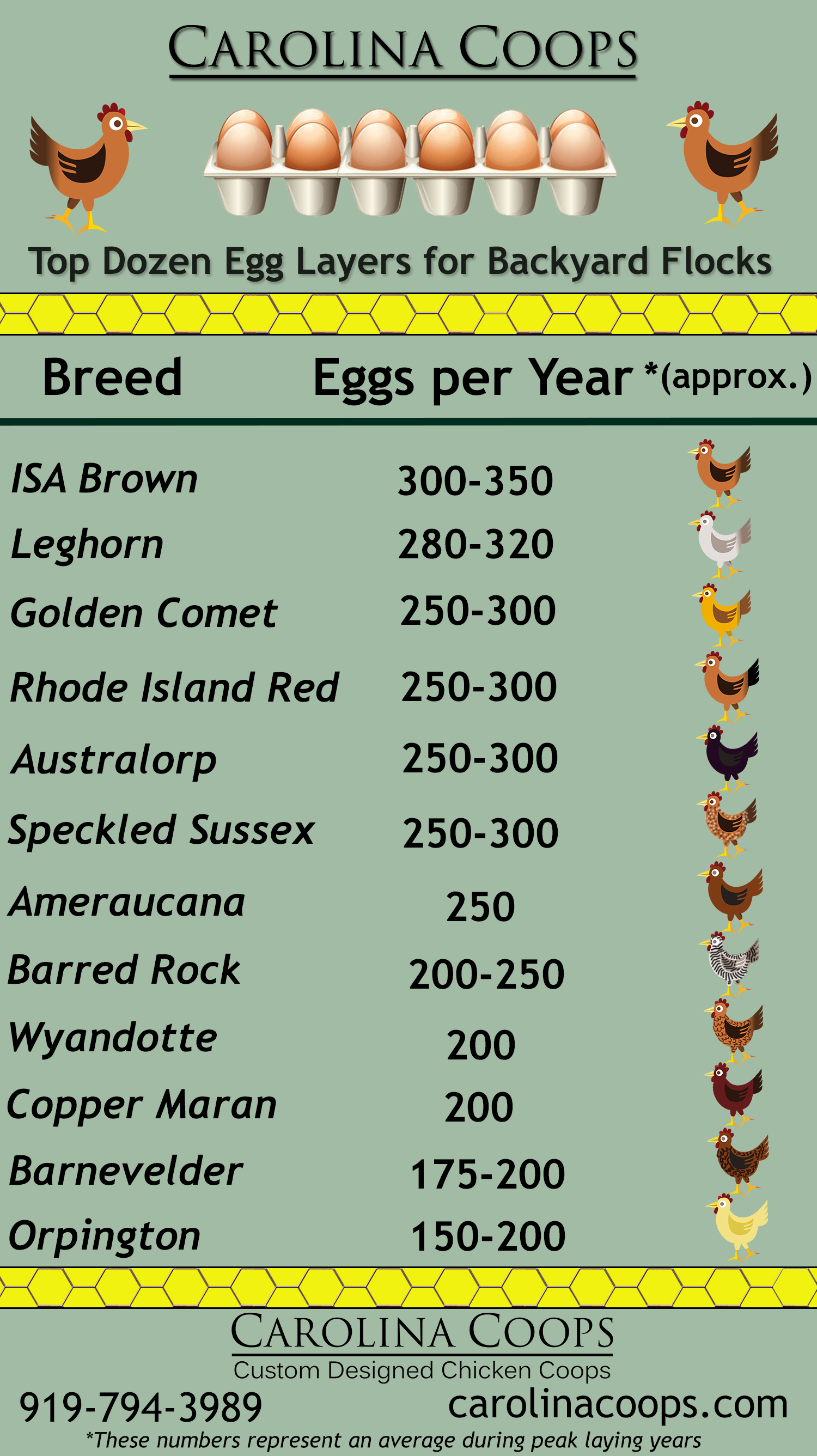 We compiled a list of the top dozen egg layers (get it? Dozen, eggs?)
We compiled a list of the top dozen egg layers (get it? Dozen, eggs?)
This list is comprised of information garnered from various articles and may not be everyone’s experience. Additionally, many people will say another breed of chicken they have lays much more than any of these do. Which possibly will be true. So while there is no exact science to which hens lay the most eggs per year, we feel these popular birds are a good representation of some of the best layers around. Keep in mind the numbers are averages of the hen’s peak laying years.
Here’s our Top Dozen Egg Layers for the Backyard Flock:
- ISA Brown: Interestingly enough, our choice for top egg layer is not a pure bred chicken. The ISA brown is a hybrid type of Sex Link chicken believed to have been the result of a complex serious of crosses, including the Rhode Island Red and Rhode Island White. ISA stands for Institut de Sélection Animale, the company which developed the hybrid in 1978 for egg production and the name now has become a brand name. ISA Browns are docile, friendly, and low maintenance and can lay up to 350 large brown eggs a year! Unfortunately, this high egg production also leads to a shortened life span for these wonderful birds, but still we think they are a fun addition to the backyard flock.
- Leghorn: The stereotypical white chicken made famous by Looney Tunes cartoons is a popular chicken breed and prolific egg layer. (Although, not all Leghorns are white). They lay approximately 280-320 white extra-large eggs a year and come in a range of colors and patterns. They are friendly, busy, love to forage, bear confinement well, and are well-suited for any temperature.
- Golden Comet: These chickens are a modern day egg laying strain of hen. They are a cross between a Rhode Island Red and a White Leghorn. The mix gives the Golden Comet the best of both breeds, they lay earlier, like the Leghorn, and have a nice temperament, like a Rhode Island Red. Besides laying about 250-300 large, often dark brown eggs a year, these hens love hanging out with people and don’t mind being picked up, making them a perfect addition to a flock where children live.
- Rhode Island Red: These birds are a go-to chicken for anyone who wants to add a friendly, laidback egg layer to their backyard flock. Curious, motherly, sweet, busy, and excellent egg layers are just some of the charming traits of the RIR. Hardy birds for all seasons, the Rhode Island Red can lay up to 300 large brown eggs a year. It’s easy to see why this breed of chicken is bred to make hybrids of other excellent birds.
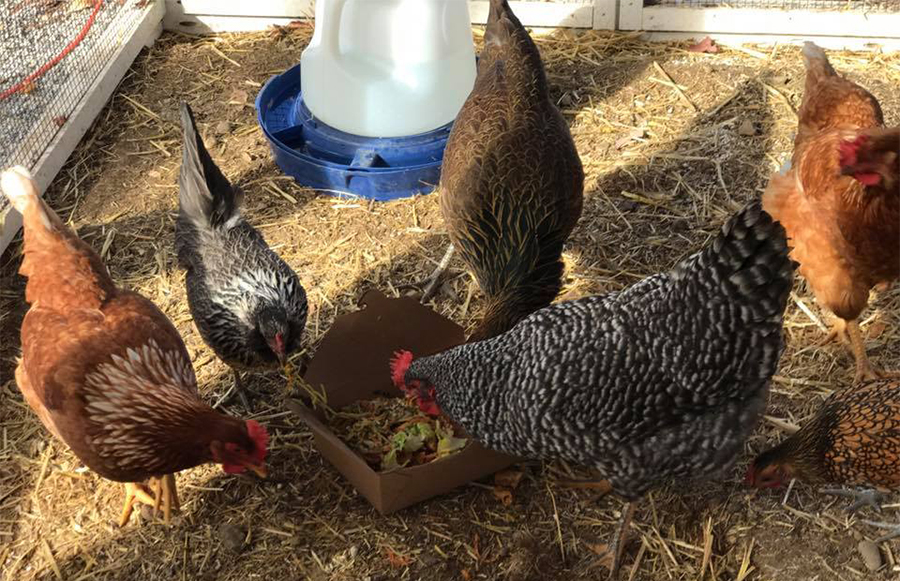
- Australorp: This chicken, from Australian origin, became popular because of its egg laying abilities. They are usually black in color with shiny iridescent feathers. They are a calm and sweet breed that lay approximately 250-300 light brown eggs a year. They are good layers even in the heat, don’t mind being confined, and tend to be on the shy side.
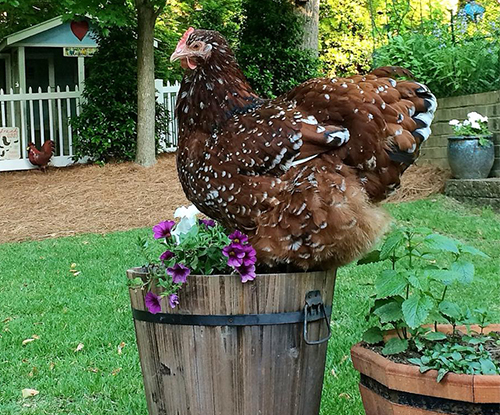 Speckled Sussex: The unique spotted feathers on the Speckled Sussex are just one of the delightful traits of these chickens. They are curious, gentle, chatty, and well-suited for any climate. The Speckled Sussex are great foragers for free-ranging, but they are happy with confinement too. Their personality and pretty feathers are enhanced by their excellent egg laying—250-300 light brown eggs a year.
Speckled Sussex: The unique spotted feathers on the Speckled Sussex are just one of the delightful traits of these chickens. They are curious, gentle, chatty, and well-suited for any climate. The Speckled Sussex are great foragers for free-ranging, but they are happy with confinement too. Their personality and pretty feathers are enhanced by their excellent egg laying—250-300 light brown eggs a year.- Ameraucana: The Ameraucana chicken was derived from the blue egg laying Araucanas, but doesn’t have the same breeding problems seen with the Araucanas. Ameraucanas have cute muffs and a beard and are very sweet birds that can go broody. They can lay up to 250 medium to large blue eggs a year. Ameraucanas come in a variety of colors and feather patterns. They are not to be confused with Easter Eggers, which are a hybrid that carries the gene for blue eggs.
- Barred Rock: Sometimes also called Plymouth Rocks or Barred Plymouth Rocks are one of the all-time popular favorites in the U.S. Developed in New England (obviously) by crossing Dominiques and Black Javas, the barred plumage pattern was the original one and other colors were added later. These hardy birds are docile, friendly, and can tolerate cold temperatures. The Barred Rocks can lay up to 250 large brown eggs a year.
- Wyandotte: Wyandottes quickly became a favorite among backyard chicken owners for their easy-going, hardy personalities, egg production, and exquisite feather varieties. The first type was Silver Laced, and now you can find Golden Laced, Silver Penciled, Blue Laced, Partridge, Columbian, Black, White, Buff, and more. They are docile, cold hardy, can handle being confined, and also love to forage. Besides being stunning lookers, Wyandottes can lay up to 200 large brown eggs a year.
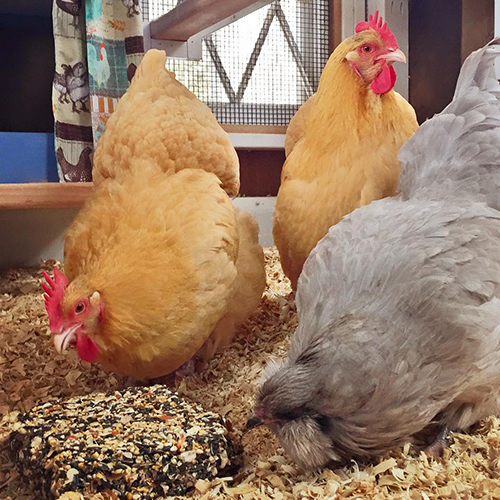 Copper Marans: Black Copper Marans are most popular of the Marans, but there are also Blue Copper and French Black Copper Marans. Known for laying the darkest brown eggs around, Marans are usually calm, hardy, and tolerate confinement well. They are also good foragers without being too destructive to your garden. Copper Marans will give the backyard chicken owner approximately 200 large chocolate brown eggs a year.
Copper Marans: Black Copper Marans are most popular of the Marans, but there are also Blue Copper and French Black Copper Marans. Known for laying the darkest brown eggs around, Marans are usually calm, hardy, and tolerate confinement well. They are also good foragers without being too destructive to your garden. Copper Marans will give the backyard chicken owner approximately 200 large chocolate brown eggs a year.- Barnevelder: Barnevelder is a Dutch breed of chicken that is becoming more popular in the U.S., probably due to its unique feather patterns, gentle disposition, and dark brown eggs. The Barnevelder chicken has lace-like brown and black feather patterns, with the double-laced and blue double-laced varieties popping up everywhere. They are friendly, tolerate the cold, and can take confinement. Best of all, these pretty girls can lay 175-200 large dark brown eggs a year.
- Orpington: No backyard chicken list would be complete without the Orpington. Called the “lap dog” of the chicken world, the Orpingtons are a must for any flock. The come in Buff, Black, Lavender, and Splash varieties, to name a few, and are kind, gentle, loving mother hens. They are easily handled, which makes them perfect for chicken people with children or those who just want to get friendly with their flock. They can tolerate the cold, be broody, and don’t mind being confined. These pet chickens can also lay up to 200 large, brown eggs a year.
Other chickens that should get honorable mentions for egg production are New Hampshire Reds, Anconas, Delawares, Welsummer, and Sexlinks.
Also keep in mind that there are many factors that will affect a hen’s egg production. Some of these factors are:
- Age
- Temperature
- Disease, illness, or parasites
- Humidity
- Feed quality
- Overall health
- Daylight
- Lack of water
- Broodiness
Most people see a drop off or complete halt in egg production during the winter when the days are shorter, during a fall molt, during extreme heat, or when a hen goes particularly broody. Also, these numbers are averages for each type of hen’s peak egg-laying years.
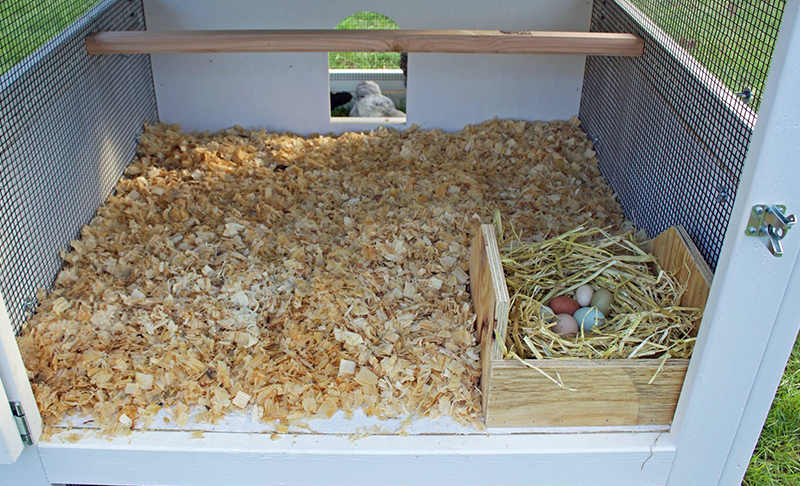
So, if it’s eggs you’re after with your backyard flock, this list will help you get started and it doesn’t hurt that these varieties are some of the most popular and easy to raise birds around.
However, everyone has their favorites and most people like to have a mixed flock, whether or not they lay a lot of eggs.
After all, who can resist the muppet-like looks of a Polish or a Silkie, or the unique and petite Barbu d’Uccle bantam?






Comments: 0
There are not comments on this post yet. Be the first one!